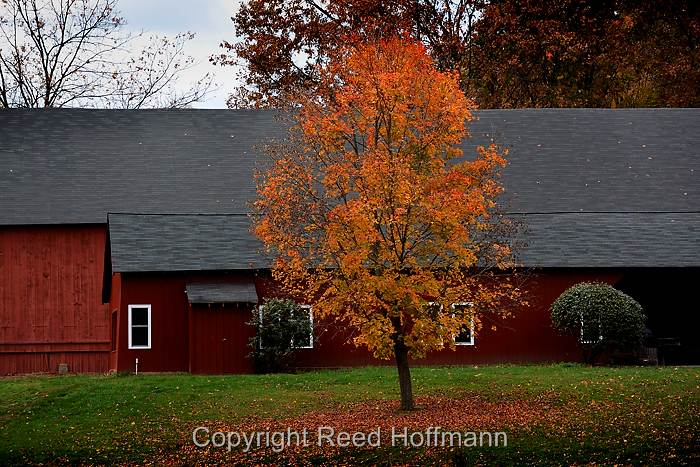As tempting as it is to live somewhere with warm weather year-round, I always worry I’d miss the change of seasons. And never is that more apparent to me than in the fall. The change of color is one of my favorite times, and I always try to get out and shoot pictures. Recently I visited a park near my home, but the color wasn’t close to peak yet. However last weekend I had a trip out east to teach a workshop, and landing in Hartford (CT), I could see that the foliage was in full color. While the plane was taxiing, I called up a map on my smartphone and found a small park near the airport. With an hour to kill before meeting my teaching partner, I drove to that park to shoot some pictures. It was time well-spent.
While we’re drawn to the color change in fall foliage, my favorite photos tend to be those that show more than just the leaves. I like to think of the color as the “accent” in the picture, the area that the rest of the photo supports. In this case, Northwest Park outside Hartford had a number of older buildings, a pond and some trails through nearby woods. It was a perfect setting for this kind of shoot because it offered more than just the colorful leaves.
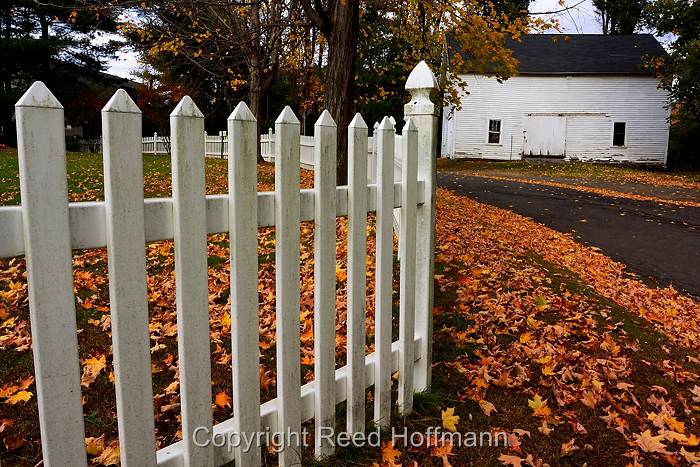
Nikon 1 V2,ISO of 160, shutter speed of 1/100 at f/10, 10-30mm lens. Photo copyright Reed Hoffmann.
I started with the nearby buildings, trying to play off their shape and color, while letting the red and yellow of the leaves add their special touch. I’ve always been a fan of symmetry, and was able to take advantage of a white picket fence and the strong lines of an old barn to drive the composition of those first photos.
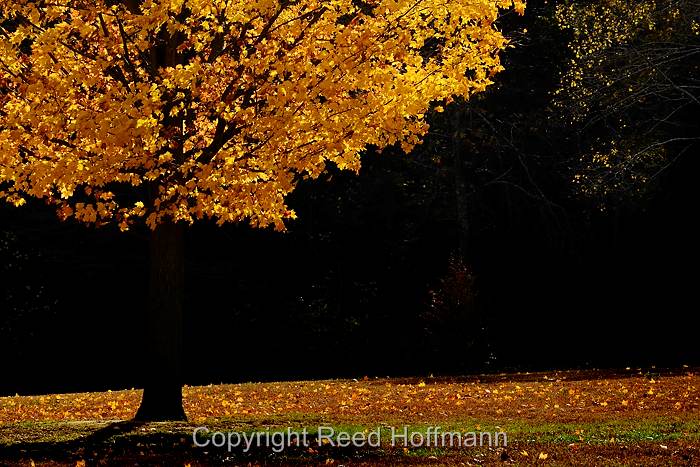
Nikon 1 V2, ISO of 160, shutter speed of 1/800 at f/5.6, with exposure compensation at -2.0, 30-110mm lens. Photo copyright Reed Hoffmann.
Heading toward the trails, I crossed a meadow where there were to trees that had bright yellow leaves. With the sun behind them, they were backlit, really bringing out the color. I found one angle that had as its background an area of woods that was in deep shade. That darkness made those backlit leaves truly stand out for their brightness (especially when I underexposed the shot).
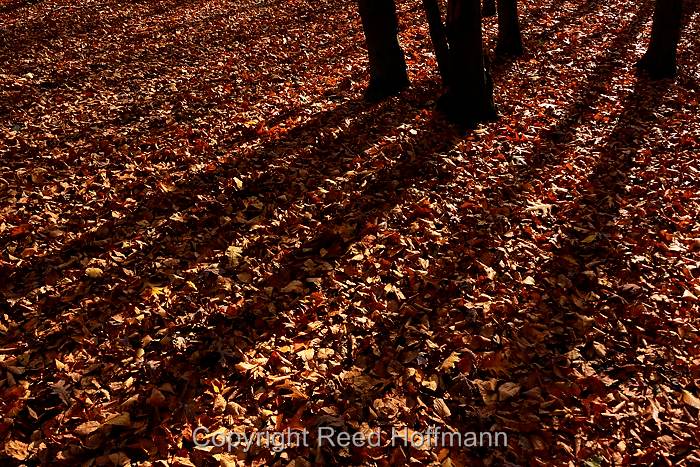
Nikon 1 V2, ISO of 160, shutter speed of 1/250 at f/7, with exposure compensation at -1.3, 10-30mm lens. Photo copyright Reed Hoffmann.
In the woods, as usual, I had a hard time finding a composition that worked. There were simply too many trees and branches, making it difficult to find a framing that wasn’t cluttered or distracting. I needed something simpler, with less complexity. Walking on, I found that at my feet. The carpet of leaves, crossed with lines from the shadows of the trees, worked perfectly.
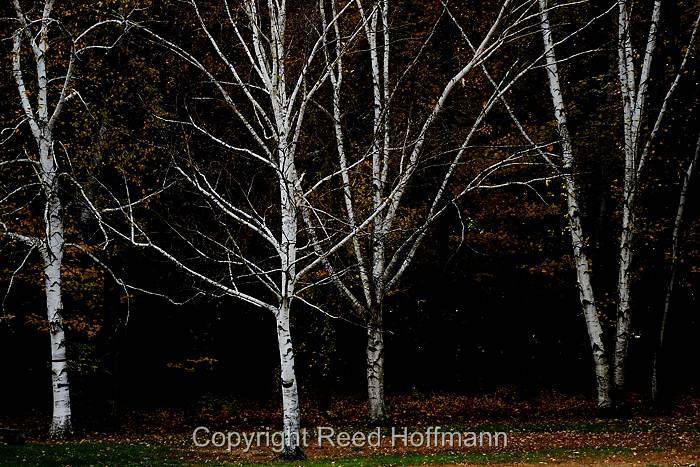
Nikon 1 V2 set to white balance of SUNNY and ISO of 160, shutter speed of 1/320 at f/5.6, with exposure compensation at -1.3, 30-100mm lens. Photo copyright Reed Hoffmann.
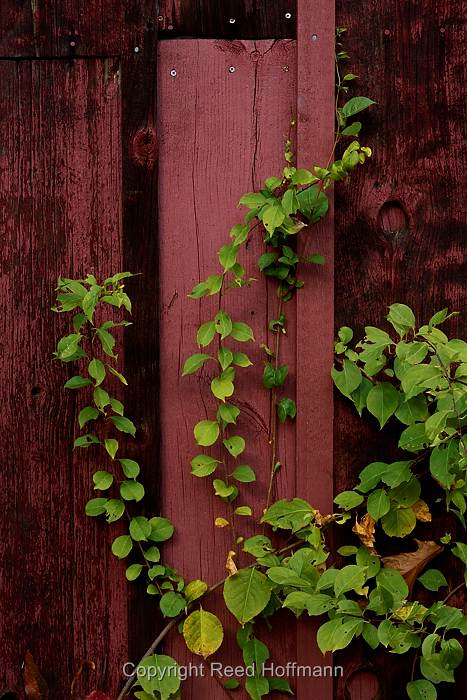
Nikon 1 V2 set to white balance of SUNNY and ISO of 160, shutter speed of 1/100 at f/7, with exposure compensation at -1.0, 30-110mm lens. Photo copyright Reed Hoffmann.
I always try to avoid getting “tunnel vision,” in this case so focused on the color change that I wasn’t seeing other pictures too. Some birch trees had lost their leaves, letting the whiteness of their trunks and limbs stand out in stark contrast against the darker background. In another spot, a vine of green creeping up the side of a barn played well against the red paint behind it, and its natural, flowing curve contrasted well with the hard edges of the boards it clung to.
There were a few techniques I used beyond just exposure and composition. Occasionally I would change the image processing (“Picture Control” on my Nikon camera) from “Standard” to “Vivid.” This added some contrast and saturation to the picture. At those times when the color wasn’t as rich, or the contrast was a little lacking, that made a big difference. Using a little minus exposure compensation also helped make the images a bit darker and richer
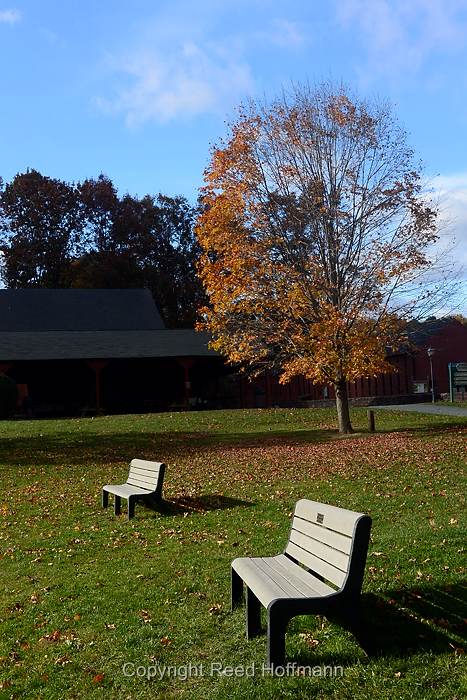
No polarizing filter. Nikon 1 V2 set to white balance of SUNNY and ISO of 160, shutter speed of 1/100 at f/8, with exposure compensation at -0.7, 10-30mm lens. Photo copyright Reed Hoffmann.
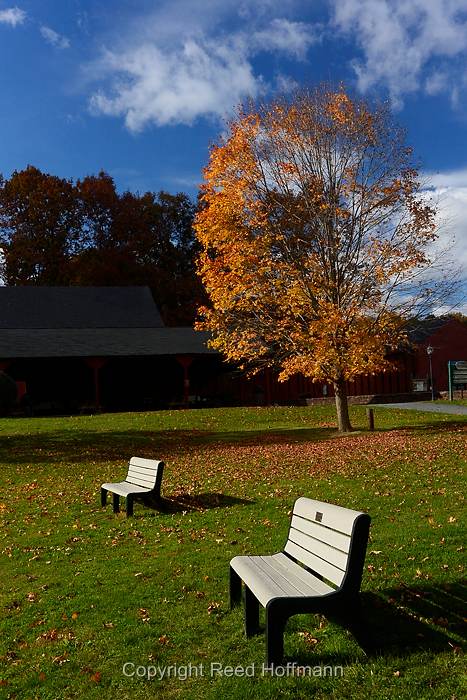
WITH a polarizing filter. Nikon 1 V2 set to white balance of SUNNY and ISO of 160, shutter speed of 1/100 at f/8, with exposure compensation at -0.7, 10-30mm lens. Photo copyright Reed Hoffmann.
I also would sometimes use a polarizing filter. While most people use these filters to darken a blue sky, they also can remove or reduce reflection or glare. Since most foliage has a waxy coating, there are times when using a polarizing filter will help let more color show through. I never keep that filter on all the time, as it’s a dark filter which reduces the light entering the camera, forcing me to use a slower shutter speed. But I try to keep it handy, so I it’s easy to get it out and look through, deciding then if I want to put it on the lens.
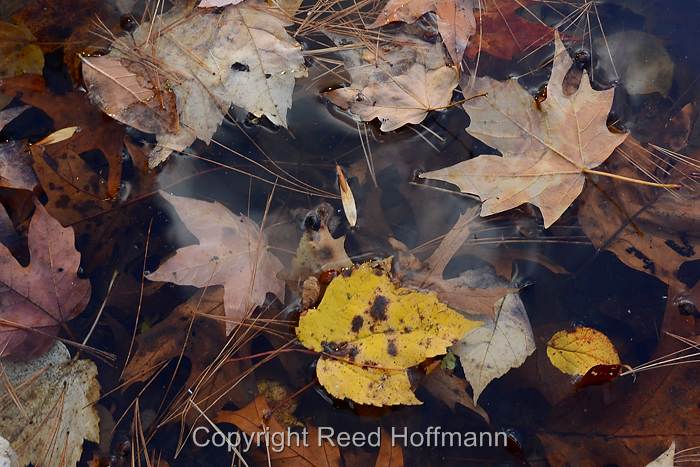
No polarizing filter, original image. Nikon 1 V2 set to white balance of SUNNY and ISO of 160, shutter speed of 1/13 at f/9, with exposure compensation at -0.7, 10-30mm lens. Photo copyright Reed Hoffmann.
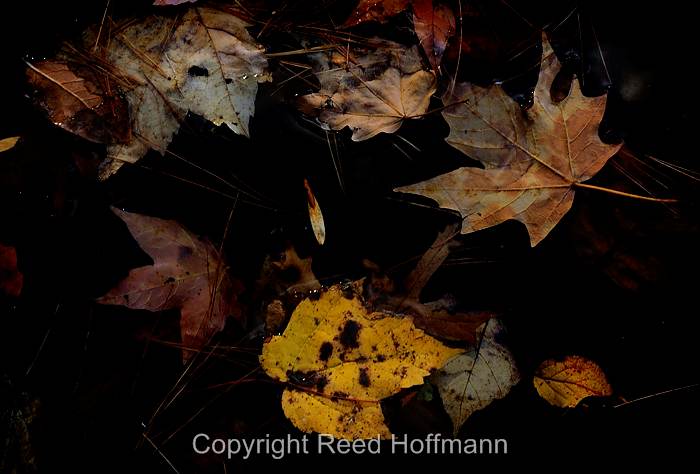
Polarizing filter used, adjust in Nikon Capture NX 2 edit software. Nikon 1 V2 set to white balance of SUNNY and ISO of 160, shutter speed of 1/13 at f/9, with exposure compensation at -0.7, 10-30mm lens. Photo copyright Reed Hoffmann.
Finally, that night, after downloading and going through the photos, I picked my favorites and did slight adjustments to brightness and contrast, to give the images a little extra “pop.” Doing that can help bring out the color in those scenes.
Flying back to Kansas City, I was looking forward to the coming weeks and the color change that would come to my area. Again I’ll head out to a park and take a walk, and look for those scenes that catch my eye and my imagination. Fall is a beautiful time of year, and the resulting colors a real treat. I urge you to do the same. And when your friends who live in warmer climes kid you about your cold weather and winter, you’ll have a ready response. Don’t write anything, just send them a photo of the beautiful fall colors you’ve enjoyed. That alone is worth the winter.

